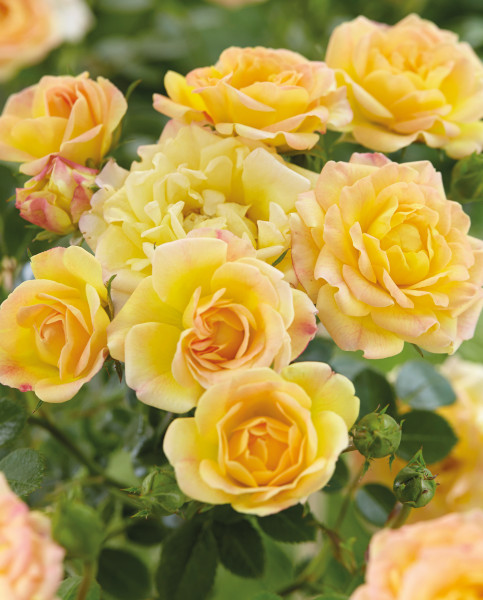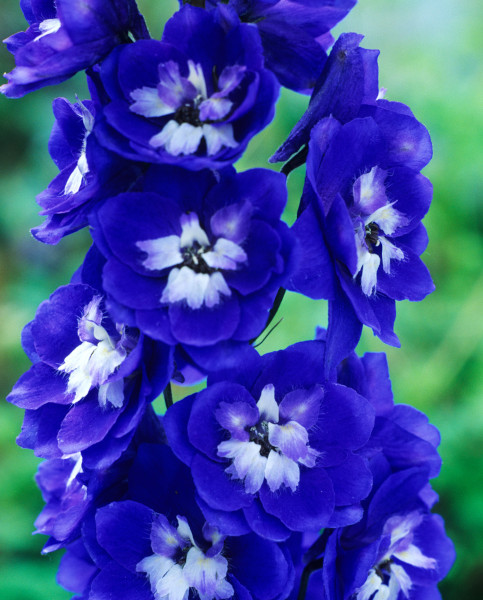How to grow Tiarella
Tiarella, also known as Foamflower, is a beautiful and unique fully hardy perennial. As a member of the Saxifragaceae family, it is a herbaceous flowering plant that grows to 50cm in height and 60cm in spread.
With delectable cultivars such as Pink Skyrocket, Spring Symphony and Sugar and Spice, Tiarella comes in a range of whites and pinks. Standing on erect stems, the clump-forming and rounded leaves hold small, star-shaped flowers. Tiarella is an easy to care for plant and its beauty has to be seen to be believed.
Flowering in the spring and summer, you can expect the lightly scented cream, white and pink flowers to appear for a few weeks. Due to Tiarella’s penchant for shade, cool conditions and shelter, it is widely grown at the front of garden borders and makes an excellent option for weed-suppressing ground cover.
Its foliage is just as interesting, as its green and purple hues will turn bronze if grown in the sun and black if grown in the shade. Tiarella also makes excellent cut-flowers and has received the RHS Award of Garden Merit due to its tolerance in UK growing conditions. Taking just 2-5 years to reach full maturity, Tiarella truly is a must-have for garden borders and for those gardeners whose time is limited.
Ready to sow a star-studded showstopper? Read on to find out more about all things Tiarella...
Key Information
Soil pH
Position
Hardiness


Where & when to plant Tiarella
Tiarella is perfect for flower beds, borders and underplanting. It enjoys moist, well-draining soil and full sun or partial sun and shade. As a natural weed suppressor, Tiarella makes excellent ground cover for the front of borders or to protect roses. Tiarella thrives in cool conditions, so partial shade and moist (but well-drained) soil will help to keep the plant healthy.
How to plant Tiarella
To plant Tiarella from roots or small plants, find a semi-sheltered position in your garden which enjoys either full or part shade
Dig a hole in your desired spot that is deep enough to cover the root ball in both depth and width. Add the plant to the hole and cover back up with soil. If you are planting multiple Tiarellas, leaving 20-30cm of space between each plant
Once planted, add water to encourage healthy growth and check that it is well-draining, as Tiarella will not tolerate sitting in standing water
Remember to water Tiarella (without waterlogging!) regularly to keep the soil moist and cool.

What to plant with Tiarella
As a hardy groundcover, Tiarellas work well in borders and can cover the ‘legs’ of roses while suppressing weeds and keeping the border looking tidy. Tiarella works best at the front of a border due to its maximum height of 50cm - consider planting other hardy perennials behind it which enjoy similar soils and sun exposure.
We suggest Delphiniums which are tall and erect, with beautiful purple flowers, growing to a maximum height of 200cm. Eupatorium is known as a towering perennial; perfect for the middle of the border, with a 150cm maximum height and late summer-autumn flowering period.


How to care for Tiarella
Pruning & Deadheading
Tiarella is easy to care for. There is no pruning needed although you may decide to deadhead spent flowers in the autumn to encourage more flower growth or reblooms.
Watering
To keep the soil moist beneath your Tiarella, water regularly. Remember that Tiarella enjoys cool soil, so you should water more frequently in periods of dry weather or prolonged warmth.
Cold Protection
As a fully hardy perennial, your Tiarella can cope with conditions as low as -20°c. You can apply mulch to the base of the plant after deadheading to protect against frost damage in the winter.
Pests & Diseases
Tiarella is generally disease-free, so the main pest to be wary of is slugs. Look out for silvery trails as well as small, irregularly shaped holes in the leaves. Slugs can kill younger plants by doing this, so keep a keen eye out for these garden pests.
How to propagate Tiarella

The most effective way to propagate your Tiarella is in the spring by division. This means cutting off a section of the plant and growing it as its own plant. Not only is this a quicker solution than growing from seed - you will also benefit from direct replicas of the parent plant.

Start by carefully removing the parent plant from its soil. Using a clean knife, scissors or secateurs, gently cut off a section of healthy roots - no more than ⅓ of the entire plant. Re-plant the parent as soon as possible to protect it from damage. Add your divided plant or plants to a pot of well-draining potting soil and tamp down well - make sure that the pot is large enough not to restrict growth. Then, place your pot in a sheltered position outside that enjoys partial sun and partial shade

Remember to keep the soil of your Tiarella moist and cool. Waterlogging is fatal to a Tiarella, so well-draining soil is key for healthy establishment and growth. Once growing healthily the plants should be ready to plant in your border during your next planting cycle
Common Tiarella Questions
Is Tiarella an evergreen?
While the leaves and foliage of Tiarella are evergreen in mild conditions, the flowers are not.
Should you cut back Tiarella?
You should not need to cut back your Tiarella plant. However, deadheading in the autumn can help to encourage new flower growth. As a fully hardy perennial, Tiarella does not need cutting back to survive the cold weather.
Is Tiarella invasive?
No, Tiarella is not known as an invasive plant. Tiarella’s roots spread underground, and they are one of few ground cover options that are not invasive.
